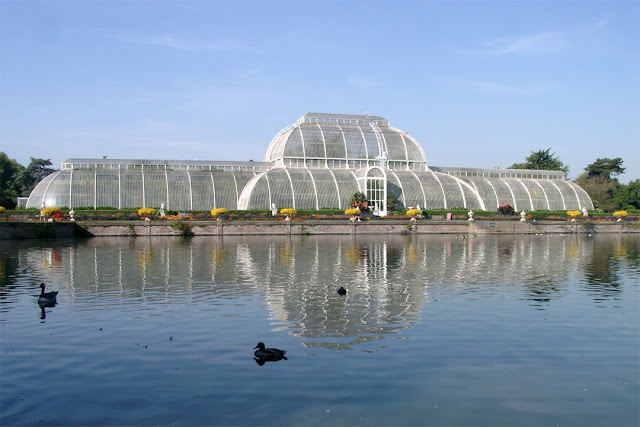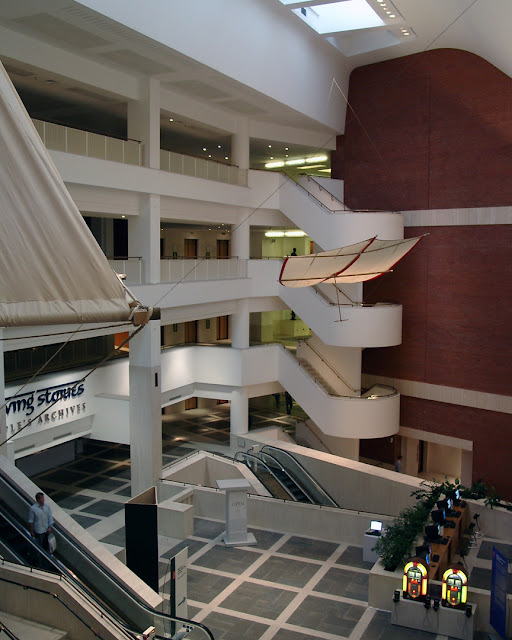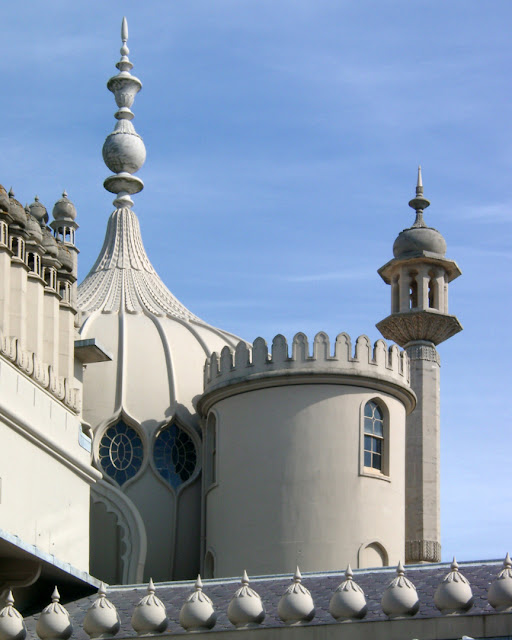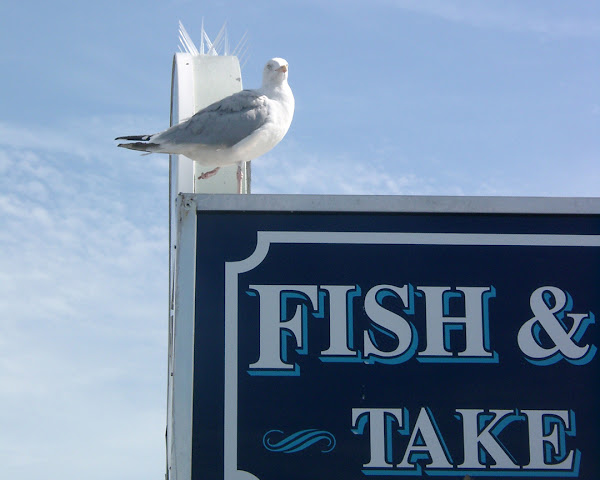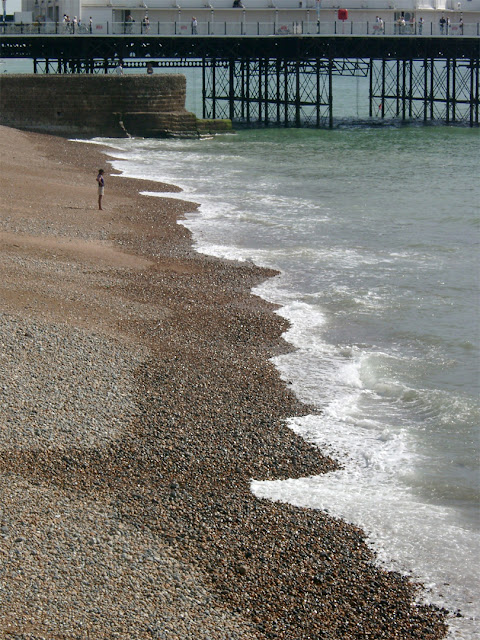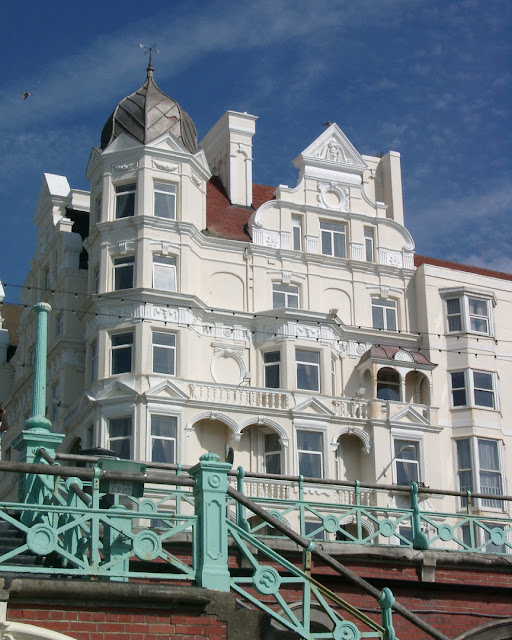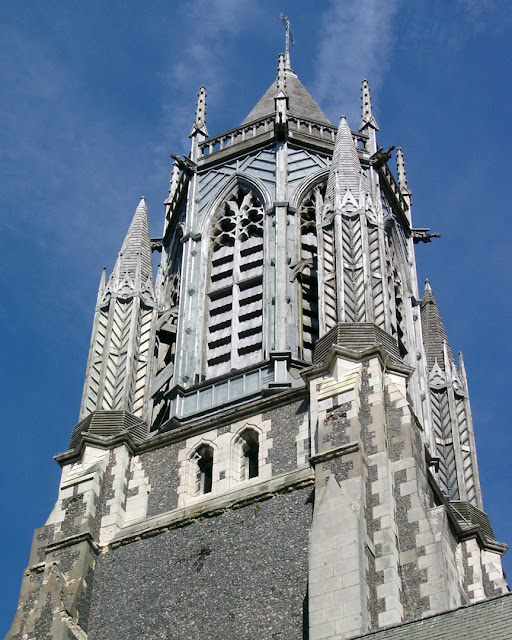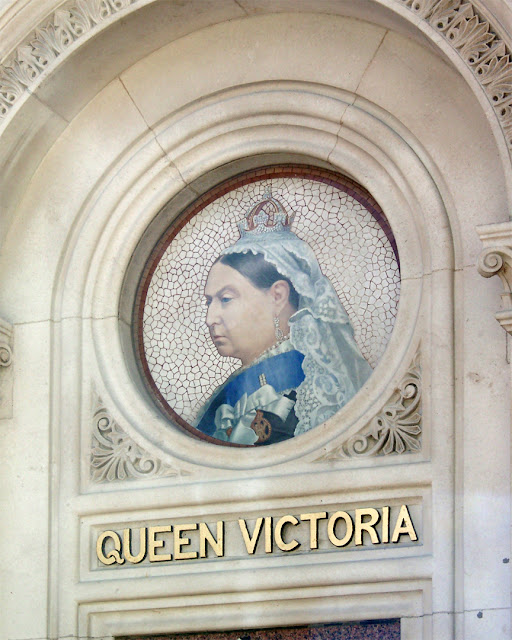Sunday, October 31, 2004
Saturday, October 30, 2004
Friday, October 29, 2004
The Profile of Time
“The Profile of Time” by Salvador Dalí, 1984
Royal Botanic Gardens
Kew, Richmond
London, September 2003
“Dalí returned to the theme of this painting with the variation The Disintegration of the Persistence of Memory (1954), showing his earlier famous work systematically fragmenting into smaller component elements, and a series of rectangular blocks which reveal further imagery through the gaps between them, implying something beneath the surface of the original work; this work is now in the Salvador Dalí Museum in St. Petersburg, Florida, while the original Persistence of Memory remains at the Museum of Modern Art in New York City. Dalí also produced various lithographs and sculptures on the theme of soft watches late in his career. Some of these sculptures are Persistence of Memory, Nobility of Time, Profile of Time, and Three Dancing Watches.” (The Persistence of Memory, Wikipedia)
Thursday, October 28, 2004
Wednesday, October 27, 2004
Palm house
Palm house
Royal Botanic Gardens
Kew, Richmond
London, September 2003
“The Palm House is a greenhouse located in the Royal Botanic Gardens, Kew that specialises in growing palms and other tropical and subtropical plants. Many of its plants are endangered or extinct in the wild. Initially built as status symbols in Victorian Britain, several examples of these ornate glass and iron greenhouses can still be found in parks such as Liverpool's Sefton Park and Stanley Park. Palm House was the first greenhouse to be built on this scale. It was also the first large-scale structural use of wrought iron.” (Palm house, Wikipedia)
Tuesday, October 26, 2004
Monday, October 25, 2004
Sunday, October 24, 2004
Saturday, October 23, 2004
Interior of the British Library
Interior of the British Library
Euston Road
Somers Town, Camden
London, September 2003
“The British Library is the national library of the United Kingdom and one of the largest libraries in the world. It is estimated to contain 170–200 million-plus items from many countries. As a legal deposit library, the British Library receives copies of all books produced in the United Kingdom and Ireland, including a significant proportion of overseas titles distributed in the UK. The Library is a non-departmental public body sponsored by the Department for Digital, Culture, Media and Sport. The British Library is a major research library, with items in many languages and in many formats, both print and digital: books, manuscripts, journals, newspapers, magazines, sound and music recordings, videos, play-scripts, patents, databases, maps, stamps, prints, drawings. The Library's collections include around 14 million books, along with substantial holdings of manuscripts and items dating as far back as 2000 BC. The library maintains a programme for content acquisition and adds some three million items each year occupying 9.6 kilometres (6 mi) of new shelf space. Prior to 1973, the Library was part of the British Museum. The Library is now located in a purpose-built building on the north side of Euston Road in St Pancras, London (between Euston railway station and St Pancras railway station), and has a document storage centre and reading room near Boston Spa, near Wetherby in West Yorkshire. The St Pancras building was officially opened by Queen Elizabeth II on 25 June 1998, and is classified as a Grade I listed building "of exceptional interest" for its architecture and history.” (British Library, Wikipedia)
Friday, October 22, 2004
Golden Jubilee livery
Arriva London (SP) Routemaster bus RM6 (VLT 6), route 137
In Golden Jubilee livery
Oxford Street
London, September 2003
Thursday, October 21, 2004
Dharmachakra Mudra
Buddha displaying Dharmachakra Mudra
The London Peace Pagoda
Battersea Park
Carriage Drive North
Battersea, Wandsworth
London, September 2003
“The Buddha preached his first sermon after his Enlightenment in Deer Park in Sarnath. The dharmachakra Pravartana or ‘turning of the wheel’ mudrā represents that moment. In general, only Gautama Buddha is shown making this mudrā except Maitreya as the dispenser of the Law. Dharmachakra mudrā is two hands close together in front of the chest in vitarka with the right palm forward and the left palm upward, sometimes facing the chest. There are several variants such as in the Ajanta Caves frescoes, where the two hands are separated and the fingers do not touch. In the Indo-Greek style of Gandhara, the clenched fist of the right hand seemingly overlies the fingers joined to the thumb on the left hand.” (Mudra, Wikipedia)
Wednesday, October 20, 2004
Tuesday, October 19, 2004
Royal Pavilion
Royal Pavilion
Pavilion Buildings
Brighton, September 2003
“The Royal Pavilion, also known as the Brighton Pavilion, is a Grade I listed[1] former royal residence located in Brighton, England. Beginning in 1787, it was built in three stages as a seaside retreat for George, Prince of Wales, who became the Prince Regent in 1811, and King George IV in 1820. It is built in the Indo-Saracenic style prevalent in India for most of the 19th century. The current appearance of the Pavilion, with its domes and minarets, is the work of architect John Nash, who extended the building starting in 1815.[2] George IV's successors William IV, and Victoria, also used the Pavilion, but Queen Victoria decided that Osborne House should be the royal seaside retreat, and the Pavilion was sold to the city of Brighton in 1850.” (Royal Pavilion, Wikipedia)
Monday, October 18, 2004
Brighton Pavilion
Royal Pavilion
Pavilion Buildings
Brighton, September 2003
“The Royal Pavilion, also known as the Brighton Pavilion, is a Grade I listed[1] former royal residence located in Brighton, England. Beginning in 1787, it was built in three stages as a seaside retreat for George, Prince of Wales, who became the Prince Regent in 1811, and King George IV in 1820. It is built in the Indo-Saracenic style prevalent in India for most of the 19th century. The current appearance of the Pavilion, with its domes and minarets, is the work of architect John Nash, who extended the building starting in 1815.[2] George IV's successors William IV, and Victoria, also used the Pavilion, but Queen Victoria decided that Osborne House should be the royal seaside retreat, and the Pavilion was sold to the city of Brighton in 1850.” (Royal Pavilion, Wikipedia)
Sunday, October 17, 2004
King George IV
King George IV by Francis Chantrey, 1830
Church Street
Brighton, September 2003
“George IV (1762-1830), by Sir Francis Chantrey (1781-1841). Inscribed 1828; unveiled 1830. Bronze on a granite pedestal, above a stone base. Outside the north gate of the Royal Pavilion, Brighton; moved here in 1922. This is a replica of the marble statue of the king at the head of the grand staircase in Windsor Castle.” (Sir Francis Chantrey, The Victorian Web)
Saturday, October 16, 2004
Friday, October 15, 2004
Thursday, October 14, 2004
Palm Court fish and chips
Palm Court fish and chips
Brighton Palace Pier
Madeira Drive
Brighton, September 2003
“Located almost dead centre of the most visited tourist attraction outside London – Brighton’s Palace Pier – Palm Court is an iconic location for a supper of fish and chips in Brighton. It’s been refurbished to reconcile the pier’s late Victorian-era architecture with a modern dining experience, offering up pretty sunset views from behind its glass-fronted walls. There’s nothing too fancy to see on tables, the set-up is almost diner-like, and the shine comes from the proximity to the waves outside. A limited selection of battered goods is available for takeaway, but if you’re settling in for a sit-down meal, order the Moules Marinières for an extra special taste of the seaside. Palm Court is definitely one to wow newcomers to the city and caters well to children with an extensive kids menu, and all kinds of attractions just a few steps outside the restaurant’s door.” (Where to find the best fish and chips in Brighton and Hove, COndé Nest Traveller)
Wednesday, October 13, 2004
Tuesday, October 12, 2004
Monday, October 11, 2004
Sunday, October 10, 2004
Saturday, October 9, 2004
Friday, October 8, 2004
Brighton Fishing Museum
Brighton Fishing Museum
Kings Road Arches
Brighton, September 2003
“The Brighton Fishing Museum is a registered independent museum established in co-operation with the local fishing community in 1994.[1] This museum is dedicated to Brighton's fishing and seaside history. It is located a short distance to the west of Brighton Pier within an area known as the Fishing Quarter, occupying two of the arches on the Kings' Road, which runs along Brighton's beachfront. Admission is free and donations appreciated. The history, traditions and practices of the fishing community are shared by a mix of images, artifacts and fishing boats. Archive and contemporary film, a slide show and a tape of fishing families talking and singing depict Brighton and the sea fishing industry from the 1800s to the 1990s.” (Brighton Fishing Museum, Wikipedia)
Thursday, October 7, 2004
Wednesday, October 6, 2004
Tuesday, October 5, 2004
West Pier
West Pier
Kings Road
Brighton, September 2003
“The West Pier is a pier in Brighton, England. It was designed by Eugenius Birch and opened in 1866. It was the first pier to be Grade I listed in England & Wales but has become increasingly derelict since its closure to the public in 1975. As of 2020, only a partial metal framework remains. The pier was constructed during a boom in pleasure pier building in the 1860s, and was designed to attract tourists to Brighton. It was the town's second pier, joining the Royal Suspension Chain Pier that opened in 1823. The West Pier was extended in 1893, and a concert hall was added in 1916. The pier reached its peak attendance at this time, with 2 million visitors between 1918 and 1919. Its popularity began to decline after World War II, and concerts were replaced by a funfair and tearoom. A local company took over ownership of the pier in 1965, but could not meet the increased maintenance cost and filed for bankruptcy. The pier closed to the public in 1975 and fell into disrepair. It gradually collapsed during the early 21st century. Major sections collapsed during storms in late 2002, and two separate fires through arson in March and May 2003 destroyed most of the remaining structure, leading to English Heritage declaring it beyond repair. Some structured demolition took place in 2010 to make way for the i360 observation tower; further structural damage from storms has occurred since. The West Pier Trust owns the remains and has proposed various renovation plans. Some schemes have been opposed by local residents and the owners of the nearby Palace Pier, claiming unfair competition.” (West Pier, Wikipedia)
Monday, October 4, 2004
St Peter's Church
St Peter's Church
York Place
Brighton, September 2003
“St Peter's Church is a church in Brighton in the English city of Brighton and Hove. It is near the centre of the city, on an island between two major roads, the A23 London Road and A270 Lewes Road. Built from 1824–28 to a design by Sir Charles Barry, it is arguably the finest example of the pre-Victorian Gothic Revival style. It is a Grade II listed building. It was the parish church of Brighton from 1873 to 2007 and is sometimes unofficially referred to as ‘Brighton's cathedral’.” (St Peter's Church, Wikipedia)
Sunday, October 3, 2004
Saturday, October 2, 2004
Friday, October 1, 2004
Jubilee Clock Tower
Queen Victoria
Jubilee Clock Tower
North Street
Brighton, September 2003
“The Clock Tower (sometimes called the Jubilee Clock Tower) is a free-standing clock tower in the centre of Brighton, part of the English city of Brighton and Hove. Built in 1888 in commemoration of Queen Victoria's Golden Jubilee, the distinctive structure included innovative structural features and became a landmark in the popular and fashionable seaside resort. The city's residents "retain a nostalgic affection" for it, even though opinion is sharply divided as to the tower's architectural merit. English Heritage has listed the clock tower at Grade II for its architectural and historical importance.” (Clock Tower, Wikipedia)
Subscribe to:
Posts (Atom)





